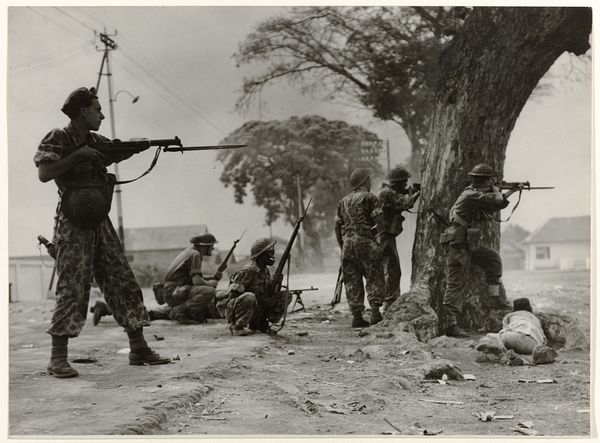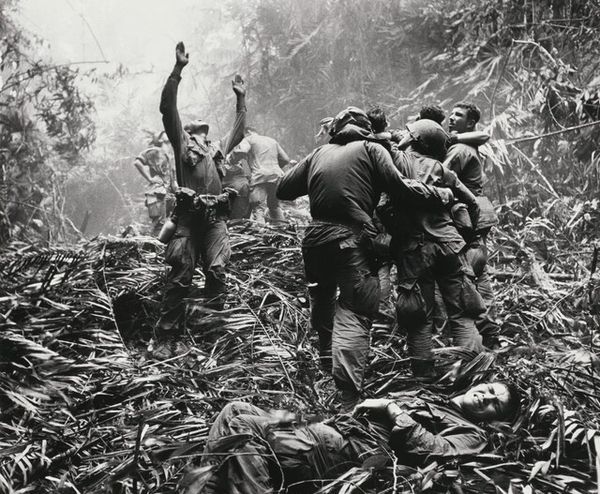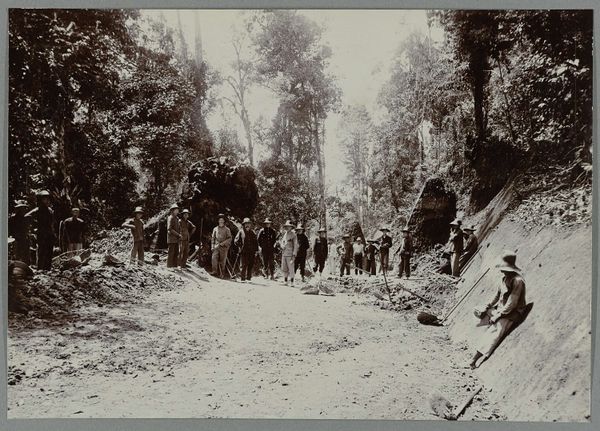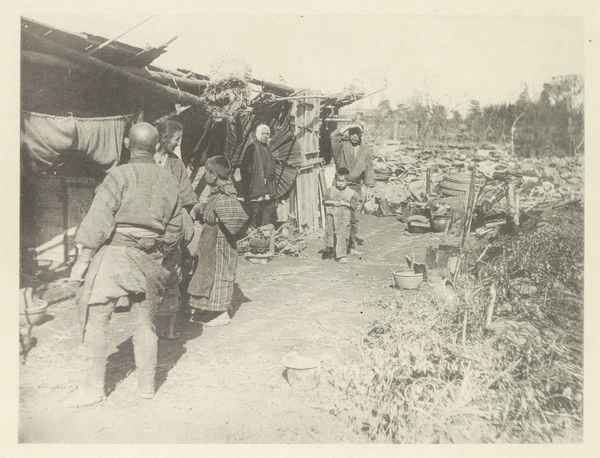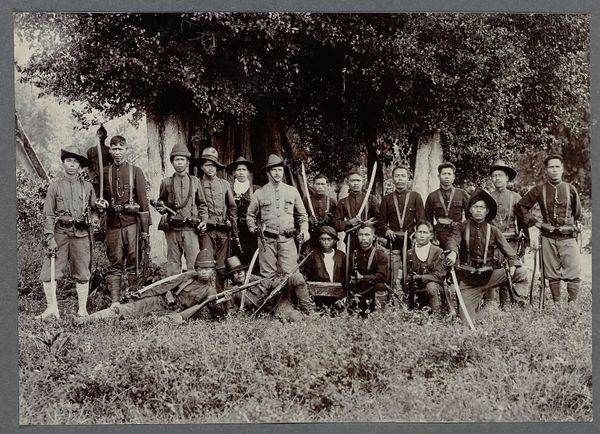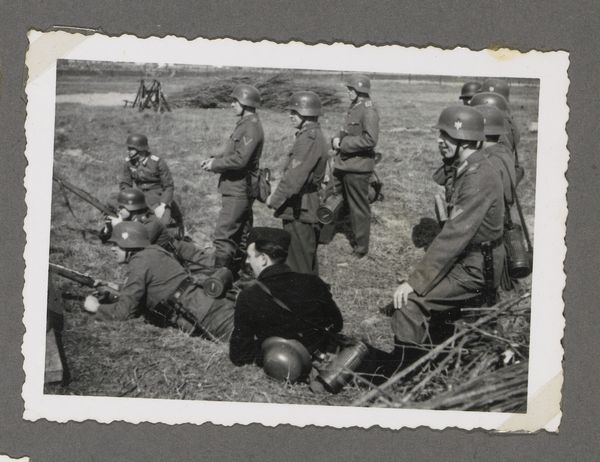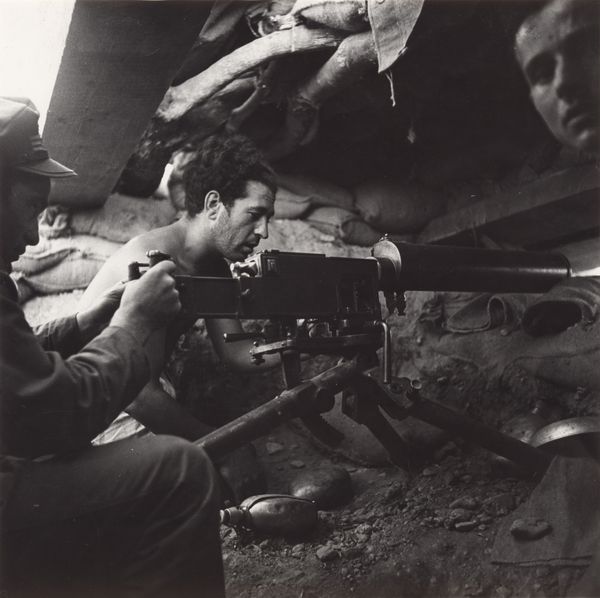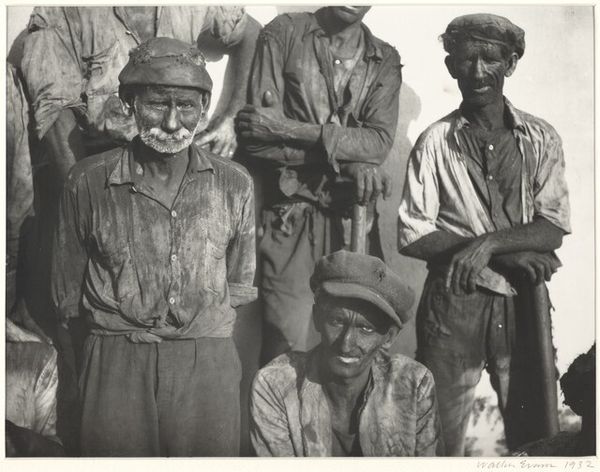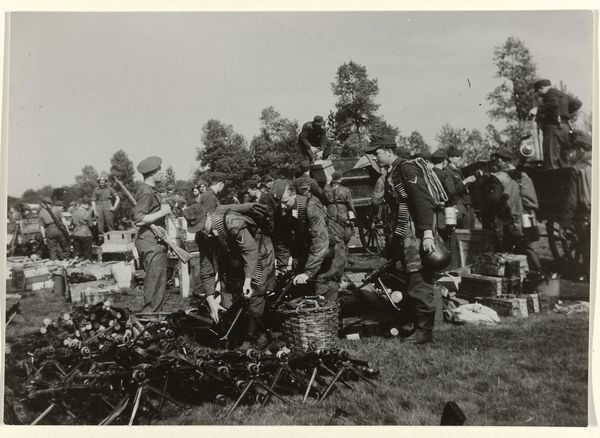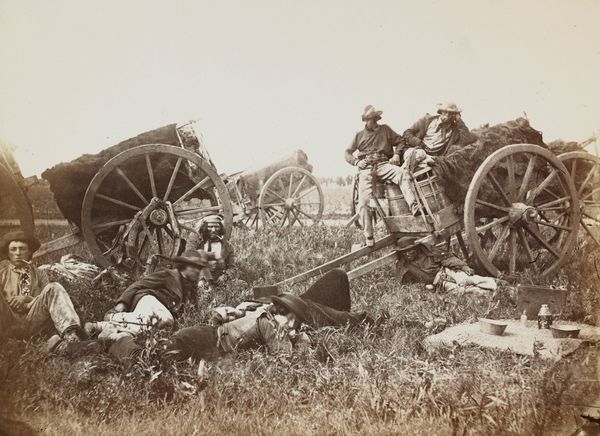
photography, gelatin-silver-print
#
portrait
#
contemporary
#
black and white photography
#
landscape
#
black and white format
#
photography
#
photojournalism
#
black and white
#
gelatin-silver-print
#
monochrome photography
#
monochrome
#
monochrome
Dimensions: image: 26 × 38.5 cm (10 1/4 × 15 3/16 in.) sheet: 35.56 × 43.18 cm (14 × 17 in.)
Copyright: National Gallery of Art: CC0 1.0
Editor: Ed Grazda’s "Logar, Afghanistan," taken in 1982, is a gelatin-silver print photograph, depicting a group of men outdoors. The way the light and shadow play across the landscape feels almost cinematic. What can you tell me about it? Curator: Looking at this piece, I'm immediately drawn to the conditions of its production and consumption. This image, a gelatin-silver print, carries the weight of both its physical materials and the historical moment of its creation. What socio-economic realities do you think made this photograph possible in 1982? Editor: I guess the availability and affordability of photographic materials played a part. Also, the political situation allowing for foreign photographers. Curator: Exactly. Consider the labor involved in creating the gelatin-silver print itself—mining the silver, manufacturing the chemicals, and then the photographer's own labor. The photograph isn't just an image; it's a material artifact embedded in a network of production, transportation and global exchange. Editor: So it’s not just *what* is shown but *how* it was made that gives it meaning? Curator: Precisely. Think about who had access to photography in Afghanistan at this time and how that impacts the stories being told, or not told. The availability of photographic materials becomes a critical lens through which to view this image. What do you take away from considering that? Editor: It gives the image a new layer of complexity and makes me think about the untold stories and whose voices were—or weren't—amplified. I will never look at gelatin-silver prints the same way! Curator: Good. Reflecting on these often-overlooked layers allows us to engage with the artwork beyond the surface.
Comments
No comments
Be the first to comment and join the conversation on the ultimate creative platform.
